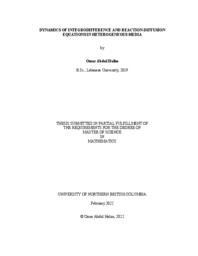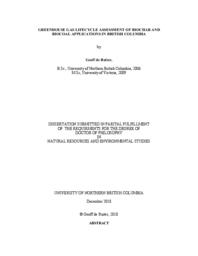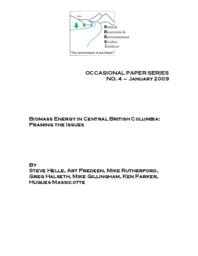Helle, Steve
Person Preferred Name
Steve Helle
Related Works
Content type
Digital Document
Description / Synopsis
In this work, we study two different models that appear in population dynamics. The first problem is concerned with an integral equation that models discrete time dynamics of a population in a patchy landscape. The patches in the domain are reflected through the discontinuity of the kernel of the integral operator at a finite number of points in the whole domain. We prove the existence and uniqueness of a stationary state under certain assumptions on the principal eigenvalue of the linearized integral operator and the growth term as well. We also derive criteria under which the population undergoes extinction (in which case the stationary solution is 0 everywhere). In the second problem we consider a reaction-diffusion model with a drift term in a bounded domain. Given a time T, we prove the existence and uniqueness of an initial datum that maximizes the total mass [equation] in the presence of an advection term. In a population dynamics context, this optimal initial datum can be understood as the best distribution of the initial population that leads to a maximal the total population at a prefixed time T. We also compare the total masses at a time T in two cases: depending on whether an advection term is present in the medium or not. We prove that the presence of a large enough advection enhances the total mass.
Origin Information
Content type
Digital Document
Description / Synopsis
Biochar, a form of black carbon produced from pyrolyzed biomass, has been touted as a product that may suppress agricultural soil emissions while also sequestering carbon. BC Biocarbon LTD, a recently established company in McBride, BC, has developed a method of producing a new product called biocoal. This biocoal is produced from a combination of crushed biochar and an organic-based binder also made from the original biomass feedstock. As their biocoal contains similar properties to fossil coal or petroleum coke, its use to reduce emissions as an energy fuel or sequestration method may be favourable to biochar’s use as a soil additive. Additionally, this biocoal may present a method of long-term carbon sequestration if buried. This dissertation assessed the greenhouse gas emissions from the production of biocoal from BC Biocarbon’s system and compared the results to wood pellet production and delivery (Project 1), coal and petroleum coke displacement (Project 2), landfilling for carbon sequestration, while also assessing biochar’s potential soil greenhouse gas reductions with added carbon sequestration (Project 3), and a regional and province-wide assessment for reducing emissions in BC using available sawmill and roadside slash residues (Project 4). Project 1 showed that when comparing biocoal made from sawmill residues to locally produced wood pellets, transportation emissions may be decreased 64% due to biocoal’s higher heating value. When comparing emissions produced for biocoal or wood pellets at gate, biocoal may show a 42% reduction in emissions or up to a 51% increase in emissions, however this is largely dependent on the data-sourced scenarios and their underlying assumptions of emissions allocation. Project 2 showed that displacing petroleum coke in cement kilns offered the largest reduction potential compared to coal applications such as electricity generation, or lead smelting. Project 3 showed that under 3 average conditions, sequestering biocoal offered greater emission reduction potential than soil applied biochar. Finally, Project 4 showed that an estimated GHG emission reduction or carbon sequestration of 28,000,00 Mg CO2e/year from current available residues, and 20,006,000 Mg CO2e/year in 10 years’ time, BC has the potential to reduce its current emissions by around 46%, and 33% in 10 years.
Origin Information
Content type
Digital Document
Origin Information
Content type
Digital Document
Origin Information
Content type
Digital Document
Description / Synopsis
"Bioenergy, or energy derived from biomass, was the predominant energy source for humans from prehistory to the mid-19th century. With on-going energy security issues, rising greenhouse-gas (GHG) levels driven by fossil fuel energy consumption and volatile natural resource prices, the biomass energy of yesterday is now being re-evaluated as the energy source for tomorrow. The technology of bioenergy production has evolved considerably in recent years, such that heat, electricity and liquid fuels for transportation can all be derived from a wide variety of biomass starting materials. Though the transformation of sunlight energy into chemical biomass energy in plants is in theory an endlessly renewable process, the way in which we manage our lands to generate this biomass energy can be degradative and unsustainable when all of the land-use values are taken into account. This paper evaluates bioenergy through the prism of sustainability, highlighting issues relating to the physical and temporal scales of the resource and impacts of its use, technological opportunities and limitations, net environmental impacts, and community concerns and needs. The geographic focus is the central interior of British Columbia, however, the issues raised in this paper will be relevant to all locations considering bioenergy."
Origin Information






